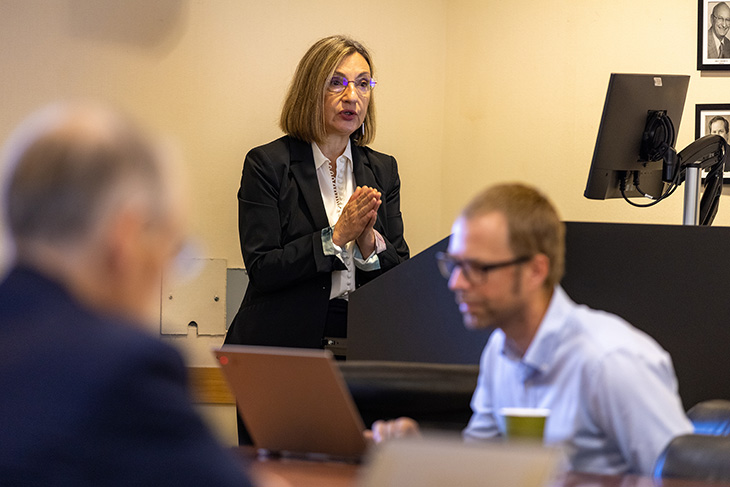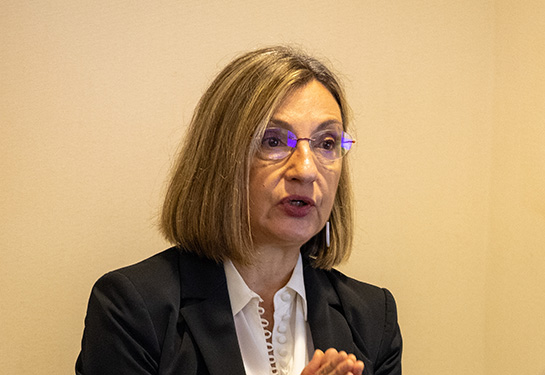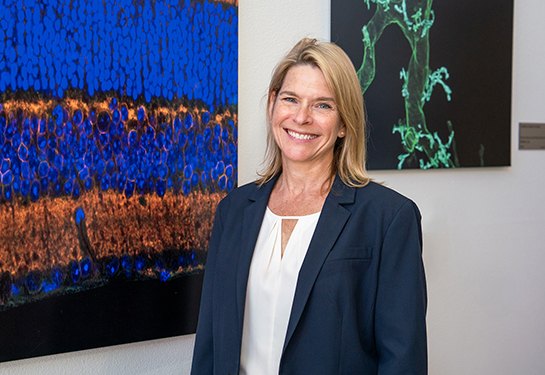Symposium at UC Davis showcases range of medical applications for light-based technologies
The National Center for Interventional Biophotonic Technologies (NCIBT), part of a national network of engineers and clinician-scientists, hosted its inaugural symposium on the Davis campus on September 29 and 30.
The new center was established earlier this year with a prestigious $6.3 million P41 grant from NIH’s National Institute of Biomedical Imaging and Bioengineering.
The hybrid in-person and virtual event brought together leading biophotonic researchers from 13 institutions, some from as far away as Germany. The goal was to exchange ideas, foster collaboration, and celebrate the launch of NCIBT at UC Davis.
Laura Marcu is the director of NCIBT and a professor in the UC Davis College of Engineering’s Department of Biomedical Engineering. “The mission of our center is to promote public health by developing new light-based imaging tools that provide essential information during critical medical procedures,” Marcu said.

New method for diagnosing, treating disease
The field of biophotonics combines the biology of living tissue and the physics of light photons. It is a promising source of imaging technologies for guiding surgical and interventional medical procedures. The light-based imaging methods being created have the potential to transform how diseases are diagnosed, managed, and treated.
Two optical imaging technologies are being developed at UC Davis. The first is interventional fluorescence lifetime imaging (iFLIM). The second is interferometric diffuse optical spectroscopy (iDOS). Both measure fluctuations in how light is diffused, absorbed, or emitted by the body’s tissues.
These light measurements are analyzed within a software platform that uses artificial intelligence, machine learning and deep learning. These analytical techniques classify the tissues being imaged and depict the results in an easy-to-interpret manner. This can guide the physician in decision-making, for example, during a procedure. This could include using the technology to identify tissue types during surgery or noninvasively monitor brain blood flow.
The symposium attendees showcased a wide range of biophotonic research projects. iFLIM, iDOS and AI-based technologies are being used to:
- Define the margins of a tumor in real-time during brain surgery
- Detect inflammation in arteries after a patient has received a stent
- Diagnose retinal diseases
- Detect oral and oropharynx cancers
- Monitor brain pressure in pediatric hydrocephalus
More examples of research projects and service projects can be found on the NCIBT website.
Our goal is to promote awareness and understanding of the center’s technology by both scientists and clinicians. We hope that their use of NCIBT imaging tools will help improve patient outcomes in numerous common diseases."—Griffith R. Harsh IV
Training and dissemination of the technology central to the center’s mission
In addition to research and development, NCIBT will support training and education in biophotonic technologies and promote their clinical use.
Griffith R. Harsh IV, professor and former chair of the Department of Neurological Surgery at UC Davis Health, is the deputy director and training leader of NCIBT. “Our goal is to promote awareness and understanding of the center’s technology by both scientists and clinicians. We hope that their use of NCIBT imaging tools will help improve patient outcomes in numerous common diseases,” Harsh said.
Currently located at the Genome and Biomedical Sciences Facility on the Davis campus, NCIBT will move to UC Davis’ Aggie Square in Sacramento upon its completion in 2024.
To learn more about NCIBT, visit the website.
Resources





